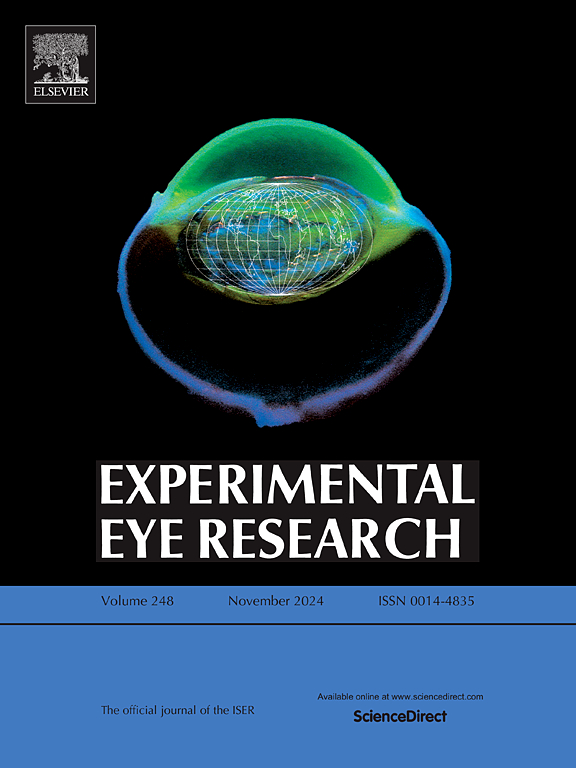Whole genome sequencing-based prediction of antibiotic-resistance of ocular Staphylococcus aureus across six continents
IF 3
2区 医学
Q1 OPHTHALMOLOGY
引用次数: 0
Abstract
Staphylococcus aureus is a leading cause of ocular infections, resulting in vision loss in severe cases. Understanding the antibiotic resistance profiles of ocular S. aureus can help customize treatments. However, there is a lack of global data on the resistance patterns of ocular isolates and comparative regional analyses. Hence, WGS data from 195 ocular S. aureus isolates across six continents were analysed to identify antibiotic resistance genes (ARGs) and predict antibiotic resistance phenotypes in this study. A total of 40 ARGs were detected, involving resistance mechanisms against aminoglycosides, beta-lactams, macrolide-lacosamide-streptogramin B (MLSB), glycopeptides, tetracyclines, other antibiotic classes, and efflux pump regulators. Notably, the prevalences of ARGs associated with efflux pump regulators and beta-lactams were particularly high (>80 %). Resistance to 45 antibiotics was predicted across the isolates, with 51 % identified as multidrug-resistant (MDR), while only 8 % were predicted to be fully susceptible to all predicted antibiotics. Regional data varied, with isolates from North America and Asia exhibiting the most extensive resistance patterns, showing predicted resistance to 45 and 41 antibiotics, respectively. In contrast, Oceanian isolates were predicted to be resistant to only 14 antibiotics. Beta-lactams showed the highest predicted resistance prevalence among all antibiotic classes. Notably, North American isolates showed markedly higher resistance to MLSB antibiotics. A high proportion of cloud genes highlights the need for monitoring regional resistance. This study provides antibiotic resistance profiles among ocular S. aureus using WGS prediction, emphasizing the importance of regional surveillance and antimicrobial stewardship to suggest effective treatment strategies. It is recommended that WGS of more strains be deposited to overcome limited data, and laboratory tests be performed to analyse the consistency between genetic predicted and phenotypic resistance.

基于全基因组测序的六大洲眼部金黄色葡萄球菌抗生素耐药性预测
金黄色葡萄球菌是眼部感染的主要原因,严重时可导致视力丧失。了解眼部金黄色葡萄球菌的抗生素耐药性可以帮助定制治疗。然而,缺乏关于眼分离株耐药模式的全球数据和比较区域分析。因此,本研究分析了来自六大洲195个眼部金黄色葡萄球菌分离株的WGS数据,以鉴定抗生素耐药基因(ARGs)并预测抗生素耐药表型。共检测到40种ARGs,涉及对氨基糖苷类、β -内酰胺类、大环内酯- lacoside -链状gramin B (MLSB)、糖肽类、四环素类、其他抗生素类和外排泵调节剂的耐药机制。值得注意的是,与外排泵调节因子和β -内酰胺相关的ARGs的患病率特别高(bbb80 %)。预计所有分离株对45种抗生素具有耐药性,其中51%被确定为耐多药(MDR),而预计只有8%对所有预测的抗生素完全敏感。区域数据各不相同,来自北美和亚洲的分离株表现出最广泛的耐药模式,分别显示出对45种和41种抗生素的预测耐药。相比之下,大洋洲的分离株预计仅对14种抗生素具有耐药性。在所有抗生素类别中,β -内酰胺类抗生素的预测耐药率最高。值得注意的是,北美分离株对MLSB抗生素的耐药性明显较高。云基因的高比例突出了监测区域抗性的必要性。本研究利用WGS预测提供了眼部金黄色葡萄球菌的抗生素耐药概况,强调了区域监测和抗菌药物管理的重要性,以提出有效的治疗策略。建议积累更多菌株的WGS以克服有限的数据,并进行实验室测试以分析遗传预测与表型抗性之间的一致性。
本文章由计算机程序翻译,如有差异,请以英文原文为准。
求助全文
约1分钟内获得全文
求助全文
来源期刊

Experimental eye research
医学-眼科学
CiteScore
6.80
自引率
5.90%
发文量
323
审稿时长
66 days
期刊介绍:
The primary goal of Experimental Eye Research is to publish original research papers on all aspects of experimental biology of the eye and ocular tissues that seek to define the mechanisms of normal function and/or disease. Studies of ocular tissues that encompass the disciplines of cell biology, developmental biology, genetics, molecular biology, physiology, biochemistry, biophysics, immunology or microbiology are most welcomed. Manuscripts that are purely clinical or in a surgical area of ophthalmology are not appropriate for submission to Experimental Eye Research and if received will be returned without review.
 求助内容:
求助内容: 应助结果提醒方式:
应助结果提醒方式:


